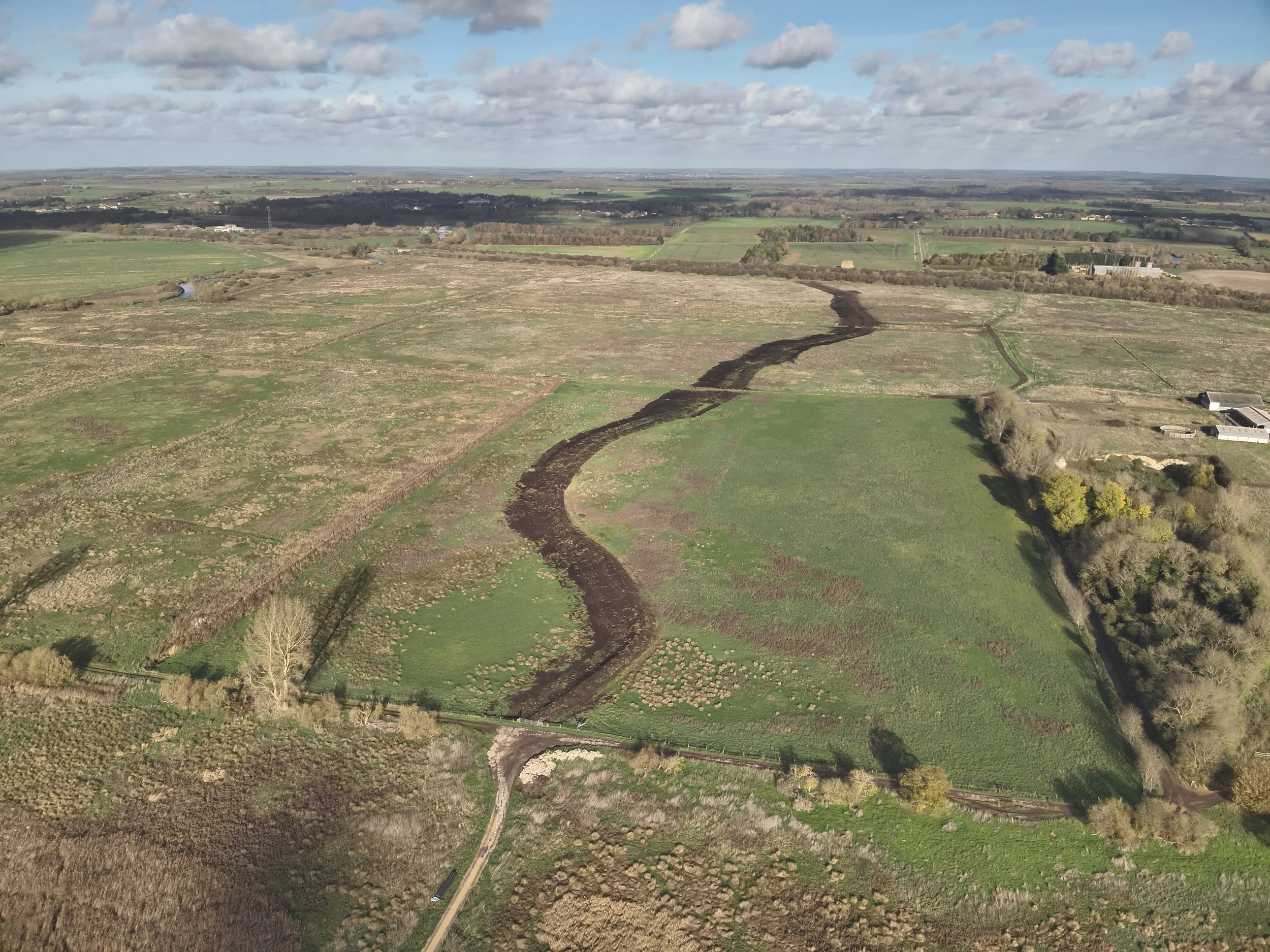Back for Good: Welcoming the water at High Fen Wildland
High Fen in winter 2024
Matthew Hay, Natural Capital Manager
On the 15th November, Storm Claudia pushed weather fronts north into England and Wales. Here these moisture-laden systems met cold, polar air being driven south out of the Arctic. The ensuing clash of airmasses forced Claudia’s fronts to stall, allowing them to dump over 60mm of rain across a large swathe of the country. At High Fen Wildland, more rain fell in those 24 hours than in March, May and June of this year combined.
In many ways, this sums up my experience of High Fen. For the two years I’ve been working to rewet this site, I’ve had a front row seat to observe the new normal for our climate: ping-ponging between extremes. As a former weather forecaster, I’ve always been interested in rainfall. Now I’m obsessed. All year I’ve been tracking rainfall projections, trying to make sense of how our planet’s hydrology is changing as ocean heating, deforestation and the loss of polar ice interact on the accelerating escalator of climate change. It makes for a challenging but exciting context in which to be rewetting a former fen: adding impetus and importance to this work.
The other context in which I increasingly situate High Fen’s story is a historical one. In his brilliant book Imperial Mud, the Australian historian James Boyce forensically chronicles the centuries-long struggle to drain the Fens. It’s a tale of fierce local resistance, including from commoners of our very own Northwold fen, which constantly challenged the elites’ notion that enclosure and drainage represented, in any way, progress. That challenge lingers heavy in the air in these parts, despite the indisputable contribution the Fens make to national food production.
As a result, almost no-one disputes that rewetting some of this region now makes sense, whether for the creation of new reservoirs, through paludiculture or for Nature recovery. In our current paradigm progress is almost always framed in economic terms, quantified as productivity; output; or return on investment.
So, as our interventions to rewet High Fen come to an end this autumn, let’s consider what managing this site for Nature is delivering.
Phase 2 of High Fen’s bund creation, carefully engineered to retain more water on the wildland
By re-saturating High Fen’s degraded peat, we will be preventing the emission of more than 100,000 tonnes of CO2e over the next 50 years. If we’re successful, we’ll also put large areas of wetland back into an active peat-forming state again, allowing the site to start acting as a carbon sink.
By designing our project around abstraction in the winter – when water in the Fens is plentiful – we’ll be effectively reconnecting High Fen to its mother river, the mighty Wissey, and allowing the site to act as a floodplain once more. This will add up to 400,000m3 of additional winter water storage to the catchment, helping to reduce both flooding and the site's demand for water in the summer months.
But perhaps most importantly, a rewetted High Fen will become a sanctuary for wildlife and a place of wonder. It will be a place where huge Norfolk reds bellow their challenge across the marsh during the autumn rut; where bevies of wild swans seek refuge from the frozen north; where pool frogs spar and short-eared owls hunt in the dying light of a winter’s day. It will be a Wildland where people can glimpse what the Fens was.
A local farmer once said to me that the drainage of the Fens was the greatest ecological disaster ever to occur in England. Putting one tiny slice of our country’s ‘Okavango’ back has been the most rewarding experience of my life, and I know the whole High Fen team could not be more grateful to the many incredible partners who have worked with us to make it happen.
The ditches are filling once again and it won’t be long until High Fen Wildland’s water is back for good. The only question that remains is…when are you coming to visit?


